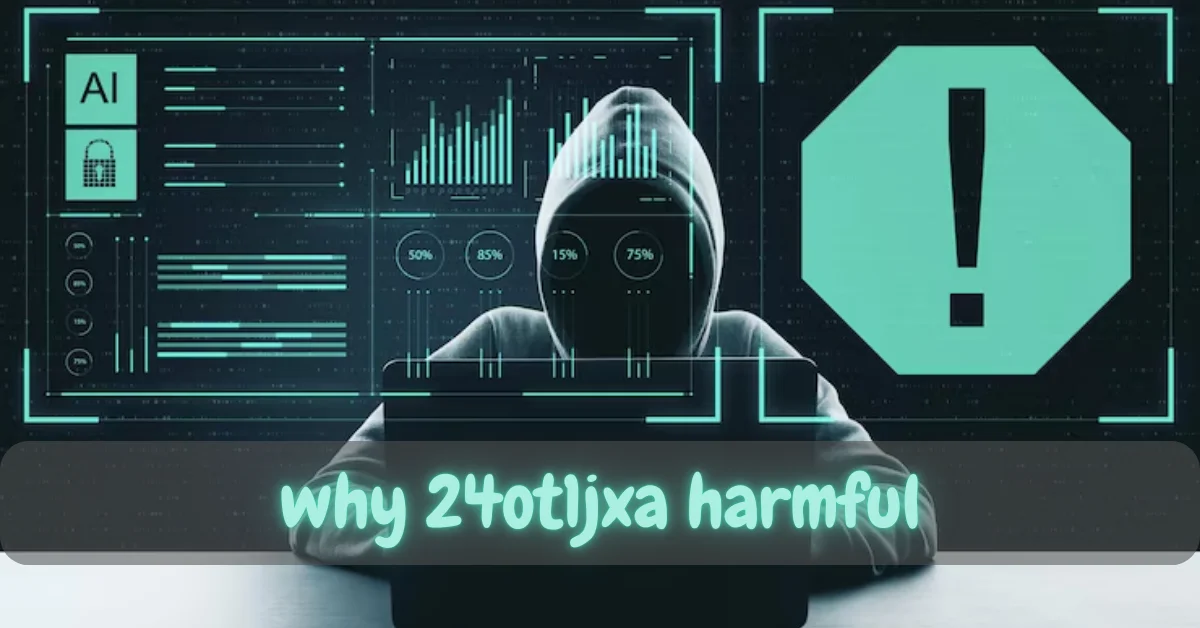Why 24ot1jxa Harmful – What You Need to Know About This Digital Anomaly
As the digital world becomes more complex, strange combinations of characters like 24ot1jxa are appearing in URLs, scripts, and hidden parts of software. While it may seem like a random string at first, tech analysts and cybersecurity observers are increasingly questioning whether 24ot1jxa is harmful — and if so, why?
This in-depth article breaks down what 24ot1jxa could be, how it might be used maliciously, and what steps users should take to protect themselves.
What is 24ot1jxa?
Currently, 24ot1jxa is not a known software name, product ID, or recognized code in any major programming language or open-source library. However, the structure and behavior of such character strings are often consistent with:
-
Obfuscated malware signatures
-
Tracker injection codes
-
Randomized file names used in phishing or hacking tools
-
Encoded identifiers used in malicious links or scripts
While 24ot1jxa isn’t officially categorized yet, its format resembles code typically designed to bypass detection by antivirus software or firewalls.
Why 24ot1jxa Could Be Harmful
There are several theoretical and practical reasons why 24ot1jxa may represent a security concern.
1. Obfuscation Tactics
Malware and spyware often use nonsensical or randomized file names to hide in plain sight. A file, process, or script labeled “24ot1jxa” may escape attention from users or systems not actively scanning for irregularities.
2. URL or Cookie Injection
Some harmful scripts append random strings like 24ot1jxa to web addresses or cookies to track user behavior, manipulate session data, or deliver payloads discreetly.
3. Phishing or Scam Redirects
Fraudulent links might include or redirect through suspicious IDs such as 24ot1jxa, sending users to dangerous or spoofed websites where credentials can be harvested.
4. Identity Masking
Hackers may use random identifiers to disguise their digital fingerprints. In some cases, 24ot1jxa could be part of a broader botnet control system or command chain.
How to Tell If 24ot1jxa is Affecting Your Device
You won’t find “24ot1jxa” directly visible in your device’s user interface, but here are warning signs that something related could be operating:
-
Unexplained background processes or CPU spikes
-
Pop-ups or browser redirects with odd URLs
-
Unexpected file downloads or encrypted files
-
New startup programs you don’t recognize
-
Slower system performance without a clear cause
If you encounter the term 24ot1jxa in a URL, browser log, app permission, or downloaded file, treat it with high suspicion.
How to Protect Yourself from Potential Threats Like 24ot1jxa
1. Use Advanced Antivirus Tools
Standard antivirus programs may miss stealthy strings like 24ot1jxa. Use advanced security suites that scan heuristics, behavioral patterns, and encrypted threats.
2. Monitor All Network Traffic
Run a firewall with detailed logging. Look for connections or data transmissions involving URLs or domains containing unusual strings like 24ot1jxa.
3. Avoid Downloading Files with Random Names
If you download a file with an unknown or meaningless name, delete it immediately and scan your system. Never run .exe, .js, or .scr files from unverified sources.
4. Reset Compromised Accounts
If you suspect you’ve clicked a malicious link or visited a suspicious site, change your passwords and enable two-factor authentication immediately.
Could 24ot1jxa Be a Marker of a Larger Cybersecurity Issue?
Possibly. Cybersecurity experts believe that strings like 24ot1jxa could be part of evolving algorithmic attacks, where AI generates unpredictable patterns to mask malicious activity. These strings can:
-
Help deliver ransomware payloads
-
Act as “beacons” for hacker callbacks
-
Identify users through covert fingerprinting
Therefore, even if 24ot1jxa isn’t dangerous by itself, its presence can indicate underlying malicious infrastructure.
FAQs About 24ot1jxa
What exactly is 24ot1jxa?
24ot1jxa appears to be a random or obfuscated string, potentially used in malware, tracking scripts, or phishing URLs. It’s not officially recognized but shares traits with dangerous digital patterns.
Is 24ot1jxa a virus?
Not directly, but it may be associated with malicious behavior. If it shows up in a file, script, or URL, treat it as potentially harmful and investigate immediately.
How can I remove 24ot1jxa from my system?
Use a reputable antivirus scanner and manually check your system for suspicious files. If found within apps or browser extensions, uninstall and clear cache/data immediately.
Why are such codes dangerous even if they don’t ‘do’ anything?
These strings are often used to hide harmful intent. They may be placeholders, identifiers, or triggers embedded in more complex systems.
Should I report the appearance of 24ot1jxa?
Yes. If you find it on a company device or in network logs, report it to your IT or security team. Public reports to CERT (Computer Emergency Response Teams) are also recommended.
Final Thoughts: Stay Vigilant Against Digital Shadows
The mystery behind 24ot1jxa isn’t just about one strange-looking code. It’s a reminder that digital threats are evolving — often hiding in plain sight under masks of randomness. Whether 24ot1jxa is a one-time artifact or part of a broader trend, it’s essential to approach unfamiliar digital content with caution.
If you’re seeing patterns like this or similar codes across systems or analytics, it’s not paranoia — it’s awareness. Stay informed, stay secure, and don’t ignore the subtle signs of a deeper threat.
